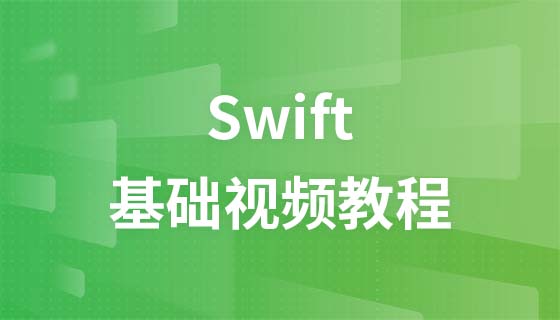智能指针与STL容器结合主要用于自动管理动态对象的生命周期,常见场景包括:1. 使用std::vector<std::unique_ptr<T>>管理独占所有权的对象集合,避免内存泄漏;2. 在树或图等复杂数据结构中,用std::shared_ptr实现共享节点,简化内存管理;3. 多线程环境下通过std::shared_ptr安全共享资源,防止悬挂指针。std::unique_ptr适用于单一所有者,不可复制但可转移;std::shared_ptr支持多所有者,但需警惕循环引用。为避免循环引用,应使用std::weak_ptr打破强引用环,如父子节点关系中子节点持有父节点的std::weak_ptr。除这两个外,标准库还提供std::weak_ptr,而Boost等库有扩展智能指针,但推荐优先使用标准智能指针以保证兼容性。

C++ STL容器和智能指针结合使用,主要是为了解决内存管理问题,避免手动
new/delete
使用STL容器存储智能指针,可以确保当容器销毁或者元素被移除时,智能指针会自动释放其所指向的内存。这避免了内存泄漏,也简化了代码。
智能指针与STL容器结合,有哪些常见应用场景?
管理动态分配的对象集合
立即学习“C++免费学习笔记(深入)”;
假设你需要维护一个动态分配的对象集合,比如一系列自定义类的实例。使用
std::vector<std::unique_ptr<MyClass>>
#include <iostream>
#include <vector>
#include <memory>
class MyClass {
public:
MyClass(int value) : value_(value) {
std::cout << "MyClass created with value: " << value_ << std::endl;
}
~MyClass() {
std::cout << "MyClass destroyed with value: " << value_ << std::endl;
}
int getValue() const { return value_; }
private:
int value_;
};
int main() {
std::vector<std::unique_ptr<MyClass>> myObjects;
myObjects.push_back(std::make_unique<MyClass>(10));
myObjects.push_back(std::make_unique<MyClass>(20));
for (const auto& obj : myObjects) {
std::cout << "Value: " << obj->getValue() << std::endl;
}
// 当 myObjects 销毁时,其中包含的 MyClass 对象也会自动被销毁
return 0;
}在这个例子中,
std::unique_ptr
MyClass
myObjects
MyClass
实现复杂数据结构
某些数据结构,例如树或者图,通常需要动态分配节点。使用智能指针可以简化节点的内存管理。例如,你可以使用
std::shared_ptr
避免悬挂指针
当多个对象需要共享同一个资源时,使用
std::shared_ptr
std::shared_ptr
使用
std::unique_ptr
std::shared_ptr
std::unique_ptr
std::unique_ptr
std::unique_ptr
std::move
std::shared_ptr
std::shared_ptr
std::shared_ptr
选择哪个取决于你的需求。如果只有一个所有者,使用
std::unique_ptr
std::shared_ptr
std::shared_ptr
如何避免在使用
std::shared_ptr
循环引用是指两个或多个对象互相持有对方的
std::shared_ptr
避免循环引用的一种方法是使用
std::weak_ptr
std::weak_ptr
std::weak_ptr
例如,考虑一个父子关系的场景:
#include <iostream>
#include <memory>
class Child; // 前向声明
class Parent {
public:
std::shared_ptr<Child> child;
~Parent() { std::cout << "Parent destroyed" << std::endl; }
};
class Child {
public:
std::shared_ptr<Parent> parent; // 如果这里用 shared_ptr,就会造成循环引用
~Child() { std::cout << "Child destroyed" << std::endl; }
};
int main() {
std::shared_ptr<Parent> parent = std::make_shared<Parent>();
std::shared_ptr<Child> child = std::make_shared<Child>();
parent->child = child;
child->parent = parent; // 循环引用
// parent 和 child 都不会被销毁,导致内存泄漏
return 0;
}为了解决这个问题,可以将
Child
parent
std::weak_ptr
#include <iostream>
#include <memory>
class Child; // 前向声明
class Parent {
public:
std::shared_ptr<Child> child;
~Parent() { std::cout << "Parent destroyed" << std::endl; }
};
class Child {
public:
std::weak_ptr<Parent> parent; // 使用 weak_ptr 打破循环引用
~Child() { std::cout << "Child destroyed" << std::endl; }
};
int main() {
std::shared_ptr<Parent> parent = std::make_shared<Parent>();
std::shared_ptr<Child> child = std::make_shared<Child>();
parent->child = child;
child->parent = parent; // 不再造成循环引用
// parent 和 child 都会被正确销毁
return 0;
}现在,
Child
parent
parent
Child
除了
std::unique_ptr
std::shared_ptr
除了
std::unique_ptr
std::shared_ptr
std::weak_ptr
std::shared_ptr
此外,还有一些非标准的智能指针,例如boost库中的智能指针,它们提供了更多的功能和选项,例如
scoped_ptr
std::unique_ptr
intrusive_ptr
以上就是C++STL容器与智能指针结合使用的详细内容,更多请关注php中文网其它相关文章!

每个人都需要一台速度更快、更稳定的 PC。随着时间的推移,垃圾文件、旧注册表数据和不必要的后台进程会占用资源并降低性能。幸运的是,许多工具可以让 Windows 保持平稳运行。




Copyright 2014-2025 https://www.php.cn/ All Rights Reserved | php.cn | 湘ICP备2023035733号